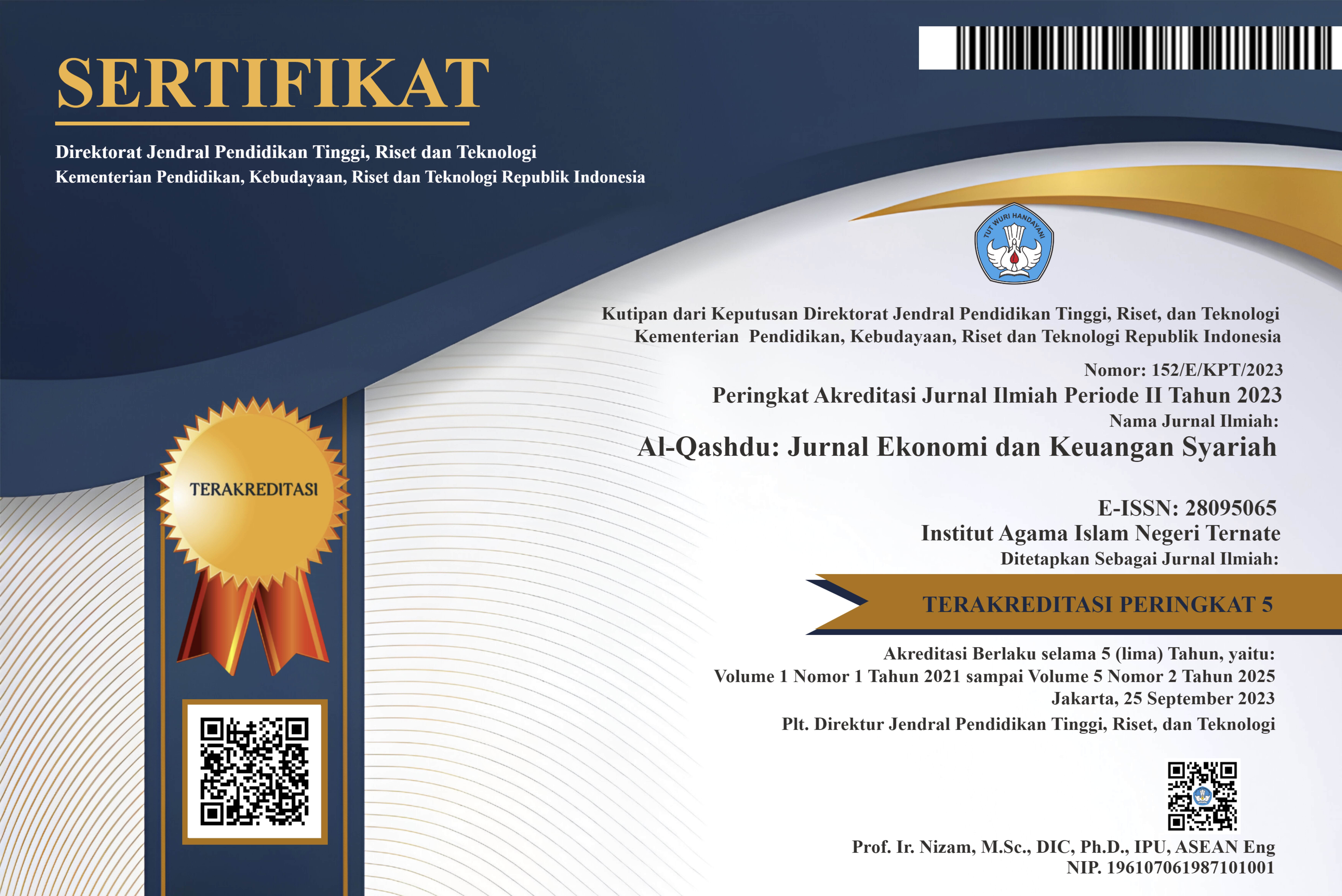KEBIJAKAN MONETER DAN TINGKAT INFLASI PADA ERA NEW NORMAL DI INDONESIA
Abstract
The monetary policy implemented by the central bank is designed to influence prices and activities in the real sector of an economy. The process of influencing prices and the real sector is referred to as the transportation mechanism. The transportation mechanism is the channel between the Monetary Policy and Economic Connections. , Bank Indonesia aims to achieve and maintain a stable Rupiah. This clearly illustrates the role of the central bank in the economy, so that in carrying out its duties, Bank Indonesia can focus more on achieving its goals. Internal stability of the rupiah is reflected in the inflation rate, while externally it is reflected in the exchange rate. The inflation rate is generally reflected in the continuous increase in commodity prices over a certain period of time. At the same time, factors There are two factors that affect inflation. that inflationary pressure comes from the demand side and the supply side. This study aims to analyze the effect of monetary policy and how inflation in the new normal era in Indonesia. The research method used is descriptive method. Descriptive method is a method whose data sources are words, pictures, and data from the Central Statistics Agency (BPS), books and journals and other scientific works.
Keywords: Monetary Policy; Inflation.
Full Text:
PDFReferences
Al Arif, M. N. R. (2010). Teori Makro Ekonomi Islam: Konsep, Teori, dan Analisis. Alfabeta.
Badan Pusat Statistik. (2020). Perkembangan Indeks Harga Konsumen/Inflasi. In Berita Resmi Statistik (Issue 10/02).
Blinder, A. S. (1999). Central Banking in Theory and Practice. MIT Press.
Gersbach, H., & Hahn, V. (1999). Signaling Competence by Central Banks: Monetary Or Inflation Targeting? Department of Economics, Universität Heidelberg.
Ghofur, A. (2017). Pengantar Ekonomi Syariah Konsep Dasar (B. Munir (ed.)). Raja Grafindo Persada.
Nelson, E., & Nikolov, K. (2004). Monetary Policy and Stagflation in the UK. Journal of Money, Credit and Banking, 293–318.
Rahardja, P., & Manurung, M. (2008). Pengantar Ilmu Ekonomi (Third). Lembaga Penerbit Fakultas Ekonomi Universitas Indonesia.
Setyawan, A. R. (2010). Efektifitas Kebijakan Moneter Terhadap Inflasi di Indonesia. Jurnal Ekonomi Pembangunan, 8(1), 281–292.
Sukirno, S. (2012). Makro Ekonomi Modern: Perkembangan Pemikiran dari Klasik dan Baru. Raja Perindo Persada.
Warjiyo, P. (2017). Mekanisme Transmisi Kebijakan Moneter di Indonesia (Vol. 11). Pusat Pendidikan dan Studi Kebanksentralan (PPSK) Bank Indonesia.
DOI: http://dx.doi.org/10.46339/al-qashdu.v2i2.751
Refbacks
- There are currently no refbacks.

This work is licensed under a Creative Commons Attribution-NonCommercial-ShareAlike 4.0 International License.
Al-Qashdu: Jurnal Ekonomi dan Keuangan Syariah
Published by Faculty of Islamic Economics and Business, Institut Agama Islam Negeri (IAIN) Ternate
Jl. Lumba-lumba, Ternate City, North Maluku, Indonesia, 97727
Website: https://www.iain-ternate.ac.id/
Phone: +6281241674617
Email: alqashdu@iain-ternate.ac.id

